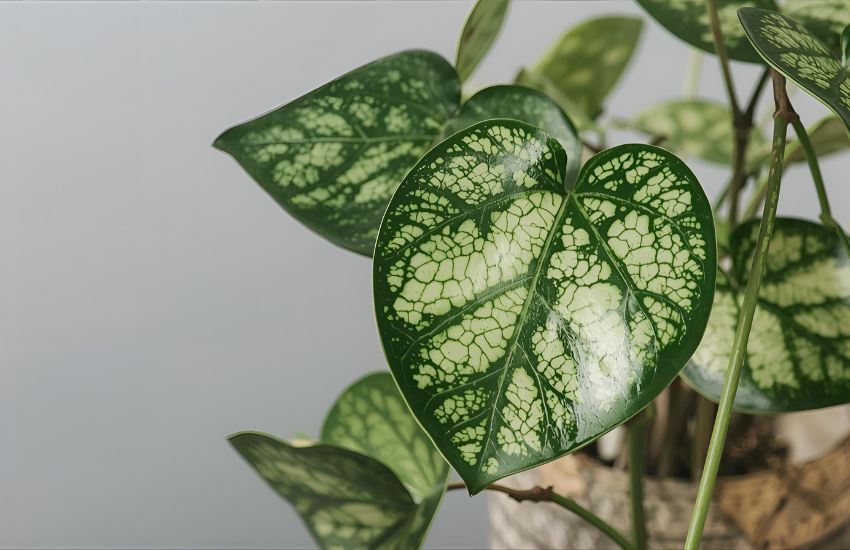If you’re drawn to plants that blend charm with resilience, the Heart Hoya Plant, also known as Variegated Hoya Kerrii, will surely capture your attention. With its striking heart-shaped leaf and slow-growing vine form, this plant brings a touch of elegance and sentiment to any modern interior. You’ll appreciate its ability to thrive with minimal care, making it a perfect houseplant for both seasoned growers and beginners.
As a succulent, the Hoya Kerrii prefers bright but indirect light, moderate humidity, and a well-draining soil mix that keeps the roots healthy. It’s best to let the pot dry slightly between waterings, as overwatering can damage this delicate species. If you decide to grow your own plant, even a single cutting or node from a trusted nursery can eventually develop into a full, trailing vine with lush foliage.
In this guide, you’ll discover expert tips on potting, watering, and propagation methods to help your Heart Hoya thrive. You’ll also learn how to manage humidity, prevent rot, and maintain that perfect edge of beauty your indoor garden deserves.
How to Grow and Care for Your Variegated Hoya Heart Plant Indoors

The variegated hoya heart is a charming and elegant indoor addition that instantly draws attention with its creamy-yellow and green marbled leaves. This heart plant, often admired as the sweetheart of modern interiors, is a slow-growing beauty that rewards patience with its glossy, waxy texture and graceful trailing vines. Whether you’re nurturing a mature variegated hoya kerrii or starting with a single-leaf hoya kerrii variegated cutting, understanding its care needs ensures long-lasting health and vibrancy.
Light and Temperature Requirements
Your variegated hoya kerrii thrives best in bright, indirect light. Too much direct sun can scorch the leaves, while too little reduces the intensity of its variegation. Keep the plant in a warm environment with a temperature range of 18°C–27°C (65°F–80°F). As a semi-succulent, this indoor plant appreciates consistency—avoid cold drafts or sudden fluctuations that can stress the plant.
Watering and Moisture Balance
This sweetheart plant prefers to dry out between waterings, as excess moisture can lead to rot. The plant likes a routine where you allow the top 2 inches of soil to dry before watering again. Choose a planter or container with proper drainage to prevent standing water. A cactus or succulent mix with added perlite is ideal for balancing aeration and hydration.
Potting, Repotting, and Drainage
Since the kerri grows slowly, you only need to repot it every 2–3 years or when the roots start peeking through the drainage holes. Select a planter just one size larger, ensuring efficient drainage and airflow. Be gentle when handling the stem, as the semi-succulent tissues are delicate and prone to bruising.
Pruning and Growth Tips
To encourage new growth, prune dead leaves or tangled trailing vines using clean shears. With time, new leaves will emerge, giving your variegated heart a fuller, lush appearance. If you’re lucky, your hoya kerrii heart might even bloom, producing small, star-shaped flowers with a faintly sweet scent.
Display and Styling
Place your heart plant on a shelf or hanging basket where its vining stems can cascade gracefully. Its compact form and glossy foliage make it a standout accent in minimalist or nature-inspired spaces. Whether it’s part of your living room arrangement or your office décor, this plant adds a touch of calm, love, and sophistication to every indoor corner.
Conclusion
In summary, caring for your Variegated Hoya Heart Plant is a rewarding experience that combines beauty with resilience. As an epiphytic species, this hardy plant adapts well to indoor environments when given the right balance of light, moisture, and nutrients. It will tolerate occasional neglect, but for optimal growth, it’s important to prefer bright indirect light rather than harsh sun exposure. Overwatering can lead to root rot, so always ensure the soil is well-draining and slightly dry between waterings.
During its dormancy, reduce watering and hold off on feeding, allowing the plant to rest. When growth resumes, fertilize monthly with a diluted fertilizer designed for succulents or use light fertilization during the active growing season to maintain vibrant leaves and steady growth. Stable humidity levels and brighter light will encourage healthy roots and fuller foliage throughout the year.
Bring home this timeless symbol of love and tranquility today—add the Variegated Hoya Heart to your indoor collection and let its elegant charm brighten your living space naturally.
Frequently Asked Questions (Heart Hoya Plant Variegated Hoya Care Guide for Modern Indoor Vines)
How do you care for a Hoya heart vine?
Care for a Hoya heart vine by placing it in bright, indirect sunlight and watering only when the soil is nearly dry. Use well-draining soil and avoid overwatering to prevent root rot. Maintain moderate humidity, keep temperatures between 18–27°C, and fertilize monthly during the growing season.
How to care for a variegated hoya plant?
Care for a variegated Hoya plant by placing it in bright, indirect sunlight to maintain its color. Use well-draining soil and water only when the top inch feels dry. Maintain warm temperatures and moderate humidity. Avoid overwatering and fertilize monthly during the growing season for healthy growth.
How do you take care of a hoya vine?
To care for a Hoya vine, place it in bright, indirect sunlight and water only when the soil is dry. Use well-draining soil and avoid overwatering. Maintain moderate humidity and temperatures between 18–27°C. Fertilize monthly during growth and support vines with a trellis for healthy climbing.
Do hoya hearts need direct sunlight?
Hoya hearts prefer bright, indirect sunlight rather than direct sun. Too much direct light can scorch their thick leaves, while low light slows growth. Place them near an east or west-facing window where they receive filtered light for several hours daily to stay healthy and maintain vibrant color.
